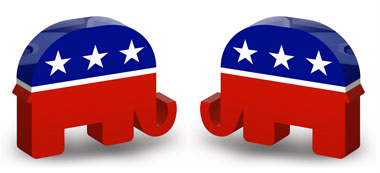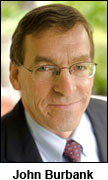OPINION
Our ‘Top 2’ primary election system takes away voter choice
By JOHN BURBANK
(Aug. 10, 2016) — Back in 1932, Washington citizens jettisoned the Republican State Treasurer and voted in a Democrat for the job of minding the state’s public monies. Since then, the people have elected and re-elected Democrats to the Treasurer’s office, over and over again, except for one election in 1952.
So it made since that coming out of last week’s primary, the Democrats garnered more than 51 percent of the vote for State Treasurer, while the Republicans came in with less than 49 percent. The people just seem to trust Democrats with our state’s public revenues.
 But guess what? There will not be a Democratic candidate for State Treasurer on the ballot in November. So if you want to vote for a Democrat for this position, don’t even bother to search for one. That’s because of the “top-two” primary system we have in our state. It means that whoever are the first and second finishers in the primary get to be on the ballot in November.
But guess what? There will not be a Democratic candidate for State Treasurer on the ballot in November. So if you want to vote for a Democrat for this position, don’t even bother to search for one. That’s because of the “top-two” primary system we have in our state. It means that whoever are the first and second finishers in the primary get to be on the ballot in November.
In the primary race for State Treasurer, there were five candidates, three Democrats and two Republicans. Marko Liias, currently the Democratic state senator from Edmonds, got 20 percent of the vote. John Comerford, another Democrat, got 18 percent, and Alec Fisken, the third Democrat, got 13 percent.
All told, the three of them received the majority of the votes.
On the Republican side, Duane Davidson got 25 percent and Michael Waite got 23 percent, for grand total of slightly more than 48 percent of the vote. But under the top-two primary system, we can have minority rule, and in the case of the race for State Treasurer, we do, with the two Republicans making it onto the general election ballot and no Democrats. And no minor party candidates either, for that matter.
We have created a monopolistic farce out of this election, rather than a real choice among candidates of different parties. Needless to say, this leaves a lot of voters disenfranchised.
This State Treasurer’s election is most glaring in its anti-democratic choice. But if you are a Republican, you have a similar non-choice in the 7th Congressional District, the one from which Rep. Jim McDermott is retiring. In November, voters get to choose from two Democrats: Pramila Jayapal, who received more than 40 percent of the vote and Brady Walkinshaw, who received 21 percent. No Republicans advanced to the general election, so if you are a Republican and live in Edmonds, don’t bother trying to vote for a Republican. You won’t find one.
The same situation holds over in the 4th Congressional District in central Washington. There voters will choose between Congressman Dan Newhouse, Republican, or Tea Party favorite Clint Didier, also a Republican. No Democrats on this ballot!
 This sort of un-choice happens all over our state, in many “elections.” Of the 124 elections for the State Legislature, 48 will not have a choice between a Democrat and a Republican. In many of these races, voters can choose from two Republicans or two Democrats or between a major party candidate and a Libertarian candidate. 26 “races” will have only one candidate on the ballot. And we thought the idea of one-party elections was the opposite of democracy!
This sort of un-choice happens all over our state, in many “elections.” Of the 124 elections for the State Legislature, 48 will not have a choice between a Democrat and a Republican. In many of these races, voters can choose from two Republicans or two Democrats or between a major party candidate and a Libertarian candidate. 26 “races” will have only one candidate on the ballot. And we thought the idea of one-party elections was the opposite of democracy!
So that’s the problem.
What’s the solution? The most fundamental principle for a democracy is to have elections in which citizens have choices. So, we could use the primary to determine the Democratic and Republican candidates for the general election. That’s how it is done in most states around the country. In fact, that is how we did it in Washington state until 2008.
And then we should make sure the minor party candidates are able to also be on the general election ballot. There is not much point in a democracy to limiting our choice to the two major parties.
But how should we fairly apportion representation for the Legislature? This doesn’t happen now. If 30,000 people vote for a Democrat, and 17,000 vote for a Republican, the Democratic candidate wins, all of the voters for the Democrat are represented, and none of those for the Republican. What would make a lot more sense is to have voting districts in which three representatives are elected. Then the 30,000 Democratic voters would get two representatives and the 17,000 Republican voters would get one representative. Everyone’s vote would count. That is a good concept for our democracy!

John Burbank is the executive director and founder of the Economic Opportunity Institute in Seattle. John can be reached at john@eoionline.org.





